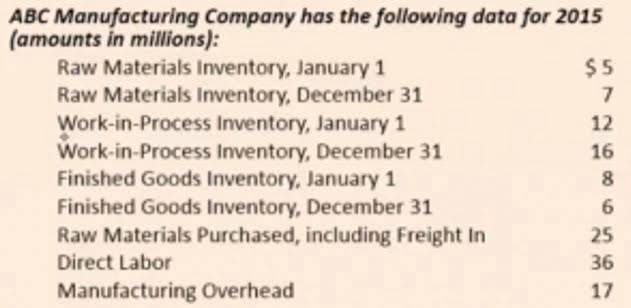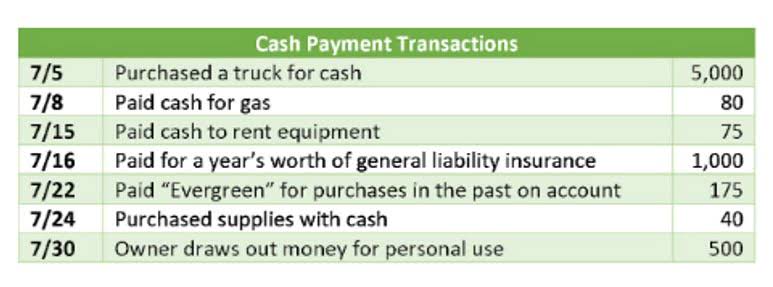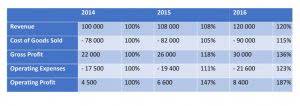
While the direct method provides more detailed information, it is more time-consuming and costly to prepare. The indirect method is less detailed but is more straightforward and less costly to prepare. The choice between the two methods depends on the size and complexity of the company and the preferences of the accountant. The indirect cash flow method starts with your organization’s net income. It then makes adjustments to get to the cash flow from operating activities.

2: Direct and Indirect Methods for Preparing a Statement of Cash Flows

In the same way, a payment is recorded when a purchase is made, not when the actual cash is sent. This method is typically used in the indirect method of measuring cash flow. This method works best on smaller scales where the necessary receipts are easily accessible and few enough that they can be quickly accounted for. Depending on the depth of reporting you’re looking for, you may want to commit the work to a direct reporting method. While compiling takes longer, the direct method gives a more transparent view of your cash inflows and outflows. In the indirect method, reporting starts by stating net profit or loss (pulled from the income statement) and works backward, adjusting the amounts of non-cash revenue and expense items.
- Moreover, you will improve transparency and meet regulatory requirements while optimizing your financial reporting practices.
- The American Institute of Certified Public Accountants reports that approximately 98% of all companies choose the indirect method of cash flows.
- The direct method individually itemizes the cash received from your customers and paid out for supplies, staff, income tax, etc.
- Therefore, no cash was paid to creditors or collected from debtors during the year.
- The main components of a cash flow statement are cash flows from operating activities, investing activities, and financing activities.
SG&A Meaning: Selling, General & Administrative Expenses (Definition)
Furthermore, many businesses don’t favor direct cash flow reporting because it can increase the amount of work they have to do to stay in compliance with certain rules. This begins with putting the right process in place to build the best cash statement of cash flows direct vs indirect flow statement for your business–in whatever time you have. That starts by choosing between the direct and indirect cash flow methods. Quick shows the $9,000 inflow from the sale of the equipment on its statement of cash flows as a cash inflow from investing activities. Thus, it has already recognized the total $9,000 effect on cash (including the $2,000 gain) as resulting from an investing activity.

Understanding the Cash Flow Statement
This is in comparison to the tedious nature of the direct method, where preparers need to monitor and document each cash inflow and outflow for the business. You do not need to go through each transaction during the period to determine its impact on the cash balance for the business. Non-compliance can lead to financial discrepancies, affecting strategic decisions and investor confidence. Make sure your accounting practices align with GAAP to enhance reliability and transparency.
How to Filter the Data in Excel for Enhanced Insights?
A balance sheet shows you your business’s assets, liabilities, and owner’s equity at a specific moment in time—typically at the end of a quarter or a year. In this article, we explored the intricacies of the direct and indirect methods of preparing the Statement of Cash Flows, highlighting their differences, advantages, and challenges. The preparation and presentation of the Statement of Cash Flows are governed by accounting standards that specify the requirements and guidelines for reporting cash flow information. These standards differ slightly between the International Financial Reporting Standards (IFRS) and the Generally Accepted Accounting Principles (GAAP) used primarily in the United States.
- Cube’s AI automates the heavy lifting, letting your finance team focus on strategic insights.
- Examples of these goals include expanding into new markets, increasing revenue streams, or improving operational efficiency.
- To prepare the cash flows from operating activities section using the indirect method, the accountant started with net income and made adjustments to account for non-cash items and changes in working capital.
- Simultaneously, dividends paid to shareholders are cash outflows that affect retained earnings but can signal company health and stability.
- Once again, you need to remember that the net cash flow from operations remains the same irrespective of the method used; it is just derived differently.
- High accounts receivable can indicate effective sales but may also suggest delayed cash inflows.
Cash flow is the total amount of cash that is flowing in and out of the company. Free cash flow is the available cash after subtracting capital expenditures. The third adjustment was to add back the $15,000 decrease in inventory to net income, since this means that the company paid $15,000 less in cash to suppliers for inventory than it recorded Accounting for Churches as an expense.
- Businesses may also generate cash inflows by obtaining refunds or license fees.
- In that case, we wouldn’t truly know what we had to work with—and we’d run the risk of overspending, budgeting incorrectly, or misrepresenting our liquidity to loan officers or business partners.
- However, the direct method is sometimes favored by financial analysts and investors because it provides more detailed and actionable cash flow information.
- Understanding the differences between the two main methods for preparing the cash flow statement–the direct method and the indirect method–can sometimes be a challenge if you’re not a trained accountant.
- Balancing these payouts with reinvestment is vital for sustained growth.
- For a smaller business, the data that the direct method requires is less cumbersome to manage and will be less restrictive.
The articles and research support materials available on this site are educational and are not intended to be investment or tax advice. All such information is provided solely for convenience purposes only and all users thereof should be guided accordingly. For instance, if a company realizes that it will have a cash shortfall in the next month, it can take steps to ensure enough funds are available. The changes in the value of cash balance due to fluctuations in foreign currency exchange rates amount to $143 million. To present a clearer picture of the two methods, there are some examples assets = liabilities + equity presented below.
Direct Cash Flow Statement

So, even if you see income reported on your income statement, you may not have the cash from that income on hand. The cash flow statement makes adjustments to the information recorded on your income statement, so you see your net cash flow—the precise amount of cash you have on hand for that time period. There are two methods to prepare the cash flow statement (direct and indirect). Both methods tell the same story about how cash moves around in the business, but from different perspectives. Analyzing cash inflows and outflows is crucial to assess a company’s ability to pay its liabilities. Similarly, you will determine its ability to invest in growth opportunities and sustain operations, which are essential for achieving long-term financial goals.
